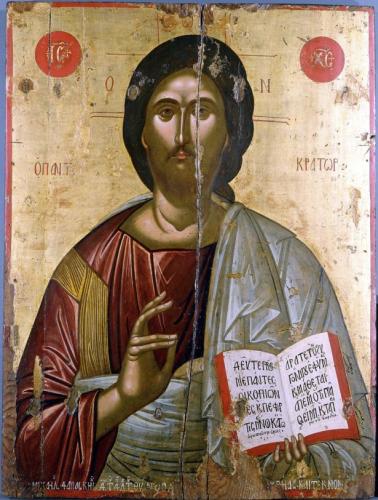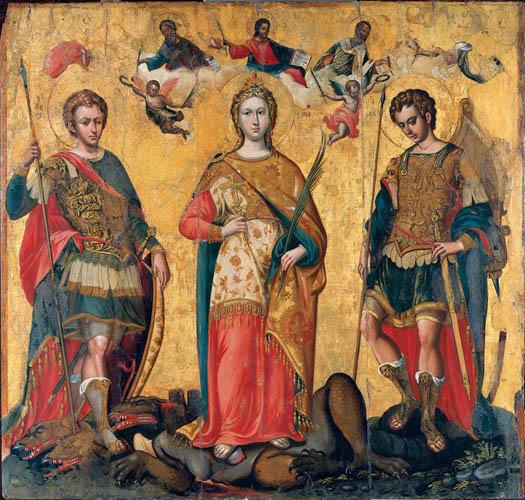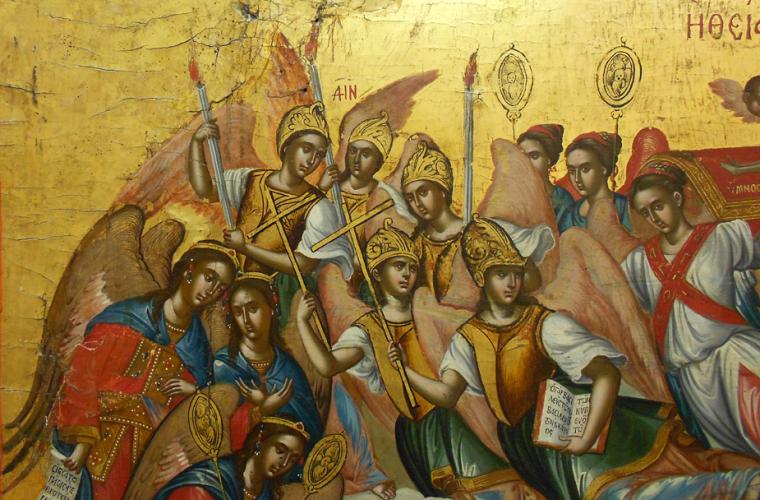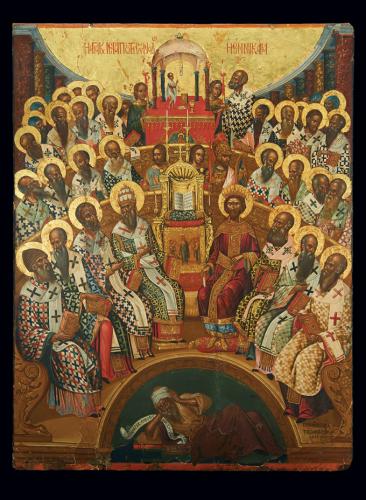
EPHORATE OF ANTIQUITIES OF HERAKLION
Digital Interactive Educational and Promotional Services for the Museum of St. Catherine in Heraklion
THEMATIC SECTIONS
Cretan Icon Painting up to the Fall of Candia
The great painters of the
15th c. had a significant contribution to the establishment of the specific
characteristics of the Cretan icon-painting. The archetypes they formatted
inspired the generations that followed. During the second half of the 15th c. prevailed
the artistic personality of the painter Andreas Ritzos, who was strongly
influenced by Angelos Akotantos. Among the important painters were Andreas
Pavias, Nikolaos Tzafouris and Nikolaos Ritzos, son of Andreas. Their works
were influenced by the late Palaeologan Art, with sparse elements from the
Italian Art of the 14th-15th c.
The
large diffusion of icons and the fame of the Cretan painters increased the demand
for their works. Over a hundred painters,
organized in unions, lived and worked in Candia. Among their clients were the
great orthodox and catholic monasteries, noble families, wealthy merchants and
bourgeois. Depending on the dogma and the artistic preferences of the client
they produced works executed in the Byzantine style (maniera bizantina) or the
Italian style (maniera italiana). The large diffusion of the icons had its own impact
to the decline of the wall-painting, which lost its artistic inspiration after
the Fall of Constantinople.
Among
the 16th c. painters, Theophanes and Euphrosynos continued to reproduce the
archetypes established by Angelos. It was in this high-quality artistic
environment of Candia that a painter of a world-wide radiance, Domenikos
Thetokopoulos, later known as El Greco, grown up. The few surviving examples of
his early work in Crete, such as the Dormition of the Virgin in Syros and the
icon of St. Luke painting the Virgin, testify the impact of the archetypes
established by Angelos on the painting of the second half of the 16th c. A.D.
This
influence was expanded on most of the painters of the second half of the 16th
c. Nevertheless, the famous painters George Klontzas and Michael Damaskenos,
strongly influenced by the trends of the Italian mannerism, decided to
experiment on new ways of representing religious themes, definitely closer to
the renaissance painting.
Around
1600 the Cretan painters returned once more to the 15th c. archetypes. The
Italian influence was reduced and the western patterns were transformed into
byzantine schemes. The technique of the icons retained a high level but became
more restrained. Distinguished painters of the period were Jeremiah Palladas
and the two painters signing under the name Emmanouel Lambardos (second half of
the 16th / second half of the 17th c. A.D.).
But the most famous painters are Emmanouel Tzane Bounialis from
Rethymnon (1610-1690) and Theodore Poulakis from Chania (1622-1692). This
amazing miniaturist merged the western tendencies with influences from the work
of Klontzas and Damaskenos.
The
Fall of Candia into the hands of the Ottomans in 1669 had abruptly interrupted
the cultural flourish of the city. Masters and works of art were transferred to
the Ionian Islands and Venice. Working abroad, the Cretan painters managed to
preserve their artistic heritage and fame. In hard conditions, the orthodox
tradition survived in the city of
Heraklion (renamed then as Megalo Kastro) in the artistic environment of
the Sinaitic dependency of St. Mathew, which
was the only orthodox church of the town until the reconstitution of the
orthodox bishopric in the church of St. Menas and Pantanassa (old metropolis).
The main artistic workshop of the time belonged to the family of Kastrofylakas,
who continued the tradition of the Cretan icon-painters, Michael Damaskenos above
all, mixed with iconographic elements from the Flemish Painters.



 The painter Michael Damaskenos
The painter Michael Damaskenos